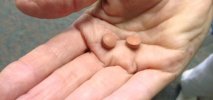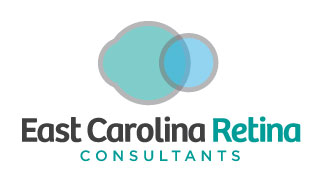New Treatment for Macular holes
Recent approval of Jetrea (Ocriplasmin) to treat symptomatic VMA (Vitreo Macular Adhesion) has opened up a new era in non surgical management of macular holes. Previously only a hospital based surgery was able to reverse the process of macular hole development but now a new drug can be injected into the eye painlessly in the office and within a few weeks the process reverses back to more normal vision levels.... more
FDA Approves ASRS Leader's ArgusŪ II Artificial Retina
On February 14, the FDA approved the Argus II artificial retina developed by ASRS Executive Committee and Board Member Mark S. Humayun, MD, PhD.
This breakthrough technology is the first ever to offer limited vision to patients with late-stage retinitis pigmentosa (RP).
Second Sight Medical Products (Sylmar, CA) manufactures the Argus II implant, which has 60 electrodes and a tiny camera mounted on eyeglasses to capture images.
The FDA approved Argus II for adults age 25 years or older with severe to profound RP. About 10,000 to 15,000 of the 100,000 Americans with RP will qualify for Argus II. Up to 4,000 patients a year can be treated with the device.
Macular degeneration and Aspirin?

Aspirin and Macular degeneration... is there an increase in the wet form of macular degeneration in those patients taking aspirin? The wet form develops quicker than the dry form. It may only be related to the fact that you are more likely to take aspirin if you have medical problems like stroke or heart attacks in the past and these conditions are more commonly associated with wet age related macular degeneration. ... more

New Treatment for Macular holes
Submitted by Dr Peter Van Houten on Sun, 03/17/2013 - 15:53
New treatment for Macular holes.
Jetrea (Ocriplasmin) now available
Recent approval of Jetrea (Ocriplasmin) to treat symptomatic VMA (Vitreo Macular Adhesion) has opened up a new era in non surgical management of macular holes. Previously only a hospital based surgery was able to reverse the process of macular hole development but now a new drug can be injected into the eye painlessly in the office and within a few weeks the process reverses back to more normal vision levels. The key to high success rates for this process is catching the problem early. If the holes are small and have not been present for long then there is a 50% rate of closure but as the hole enlarges and becomes bigger, the success rate of the drug drops to >25%. Finding the earliest hole or “pre” hole where the vitreous gel in the middle of the eye is just starting to pull on the macula (center of the vision) and causing symptoms is the best use of the new technology. Some of the symptoms can be increasing blur of the vision especially while reading and trying to see small objects. Distortion of the amsler grid around the central point or straight lines looking bent or crooked is also an indicator. Do not wait for pain to develop as this process is usually painless. Obviously any change in the vision needs an eye exam and the faster the symptoms are coming, the faster you need to be seen. If the hole is too large or the drug does not work, then surgical repair still enjoys a high success rate. The cost of any new drug is obviously very high however most if not all insurances cover this with the usual deductibles. For those with poor insurance or without insurance, the company that makes the drug (Thrombogenics, Inc) has a very generous financial assistance program that can pay for the drug.
Alternatives & risks:
The alternative to the drug is surgery called Vitrectomy that is usually done in the hospital or out patient surgery suite. It usually involves removing the vitreous get from the center of the eye and replacing it with a gas bubble (and needing about 2 weeks of face down positioning) or a silicone oil bubble (does not need positioning as much but needs a second surgery to remove the oil later). There are no other drugs or lasers that can be done for symptomatic VMA or macular hole.
The risks of injection is very small on the order of one in a thousand or less but can be devastating. Most patents get a red eye and some temporary vision symptoms that resolve in a few weeks. More serious problems that may need further treatment or surgery and can recover but there is always a small chance of loss of vision or loss of the eye. These risks are still smaller than surgical risks in my opinion.
For further information go to www.jetrea.com.
Dr Peter Van Houten's blog






